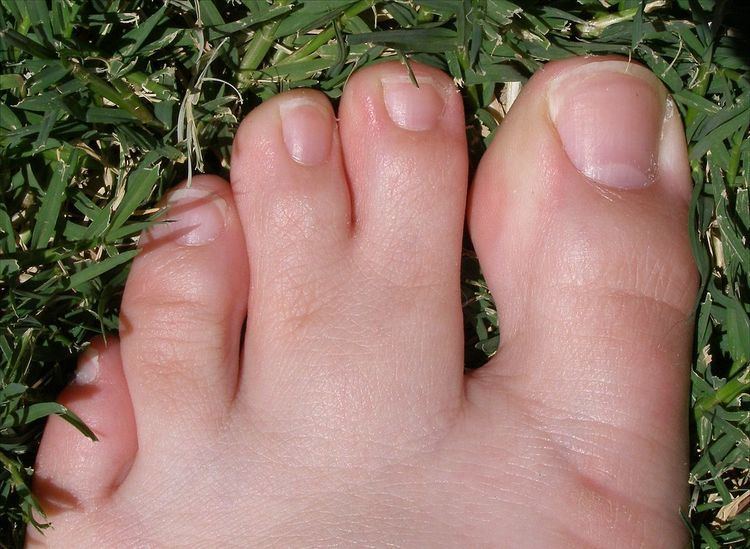Specialty medical genetics ICD-9-CM 755.13 | ICD-10 Q70.3 MedlinePlus 003289 | |
 | ||
Webbed toes is the common name for syndactyly affecting the feet. It is characterised by the fusion of two or more digits of the feet. This is normal in many birds, such as ducks; amphibians, such as frogs; and mammals, such as kangaroos. In humans it is considered unusual, occurring in approximately one in 2,000 to 2,500 live births.
Contents
There are various levels of webbing, from partial to complete. For example, the rare Hose's civet, a viverrid endemic to northern Borneo, has partially webbed feet. Most commonly the second and third toes are webbed or joined by skin and flexible tissue. This can reach either part way up or nearly all the way up the toe.
Diagnosis
This condition is normally discovered at birth. If other symptoms are present, a specific syndrome may be indicated. Diagnosis of a specific syndrome is based on family history, medical history, and a physical exam. Webbed toes are also known as "twin toes," "duck toes," "turkey toes" and "tiger toes."
Cause
The exact cause of the condition is unknown. In some cases, close family members may share this condition. In other cases, no other related persons have this condition. The scientific name for the condition is syndactyly, although this term covers both webbed fingers and webbed toes. Syndactyly occurs when apoptosis or programmed cell death during gestation is absent or incomplete. Webbed toes occur most commonly in the following circumstances:
It is also associated with a number of rare conditions, notably:
Consequences
Webbed toes in humans are a purely cosmetic condition. This condition does not impair the ability to perform any activity, including walking, running, or swimming.
People with webbed toes may have a slight disadvantage for activities that benefit from prehensile toes. Although not scientifically proven, some believe that this condition can possibly allow for a slight advantage, specifically, in athletics. Considering your big toe is a main source for balance, having your second and third toe webbed could virtually be seen as having two big toes. Thus, allowing for better balance in athletics such as running or dance.
Psychological stress may arise from the fear of negative reactions to this condition from people who do not have webbed toes.
However a disadvantage would be a difficulty in wearing flip-flops or other such footwear in warm countries.
Surgery
Webbed toes can be separated through surgery. Surgical separation of webbed toes is an example of body modification.
As with any form of surgery, there are risks of complications.
The end results depend on the extent of the webbing and underlying bone structure. There is usually some degree of scarring, and skin grafts may be required. In rare instances, nerve damage may lead to loss of feeling in the toes and a tingling sensation. There are also reports of partial web grow-back. The skin grafts needed to fill in the space between the toes can lead to additional scars in the places where the skin is removed.
